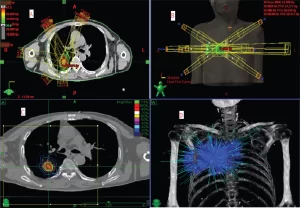“WITH LONGER FOLLOW-UP, THE MAGNITUDE OF BENEFIT OF SABR WAS MORE THAN IN THE ORIGINAL REPORT AND DURABLE BEYOND FIVE YEARS.”
In patients who developed a few metastases, it is still possible to eradicate these tumours. This is especially if the primary cancer is under control with effective agents and the overall pace of the disease remains slow.

A large international group has been running trials for years. It began with 3 sites of metastases, to 5 and now pending results for up to 10 metastases.
The Stereotactic Ablative Radiotherapy (SABR)-COMET trial aims to determine the effectiveness of stereotactic ablative radiotherapy (SABR). It included patients with oligometastatic disease. The study found that SABR improved survival and delayed disease growth. SABR was found to be effective, and did not impair patients quality of life. The study reported that SABR is an effective treatment option for patients with oligometastatic disease.
Currently, tumours from primary organs like sarcomas, renal cell carcinoma, prostate cancers etc, benefit from this ablative techniques. However, in breast patients with metastases at diagnosis, a separate study found that the benefit was minimal. This is due to the high effectiveness of systemic agents ( chemotherapy, targeted agents and hormone treatment). However, in these breast patients, sites that received radiation therapy had a much lower rate of disease progression.








